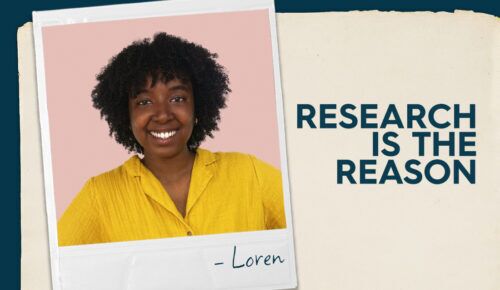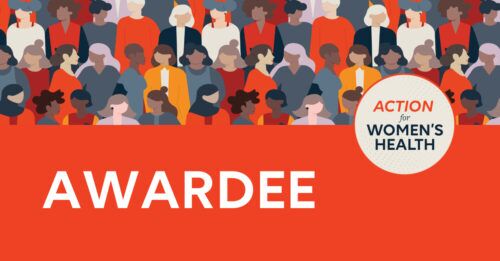5 Facts About Breast Cancer in Younger Women

Rising incidence rates, unique challenges, and more stats and facts to know about how breast cancer impacts younger women
It’s a long-standing myth that breast cancer only affects older women. And it’s not hard to see why, considering the fact that the median age at the time of breast cancer diagnosis is 62 and a very small number of women are diagnosed at a young age.
But, to the alarm of experts, the breast cancer incidence rate in women under 50 has risen faster (about 1.4 percent each year between 2012–2022) than in women over 50 (about 1 percent each year). While breast cancer incidence in younger women is still low—about 49 per 100,000 in 2019, the most recent data available—it’s a deeply concerning trend, especially since women under 40 are nearly 40 percent more likely to die from their breast cancer than women over 40. Currently, breast cancer is the leading cause of cancer death in women aged 20 to 49 in the U.S.
What’s more: the American Cancer Society recently reported that women under 50 are now nearly twice as likely to be diagnosed with cancer compared to men of the same ages—a trend that’s primarily been attributed to increasing rates of breast cancer.
Fortunately, public awareness of breast cancer in younger women may be improving. Several younger celebrities have gone public with their diagnosis, including actress Olivia Munn, 43, who revealed in March 2024 that she was treated for luminal B breast cancer—a more aggressive form of the disease. And the media has been calling attention to alarming increases in rates of breast, colorectal, lung, and other cancers in younger people.
Researchers say the reasons for rising incidence in younger women are complex and multifactorial: changing childbearing and breastfeeding patterns, increased alcohol use, excess body weight, genetics, environmental exposures, and more.
BCRF investigators and other scientists around the world have long been focused on understanding breast cancer risk factors and developing new treatments, interventions, and preventative measures in younger women. Here are five important things we know so far.
1. Young women are more likely to have aggressive forms of the disease.
Breast cancers in women under 40 are more likely to have features that can contribute to poorer prognoses and outcomes: larger tumor size, advanced tumor stage, negative hormone receptor status, and an overexpression of the HER2 protein. Triple-negative breast cancer (TNBC)—a particularly aggressive subtype without many targeted treatment options, though that is changing—is also more common in younger women. In addition, rates of metastatic breast cancer in women under 40 have risen 3.5 percent each year between 2004 and 2017. Younger women are also more likely to experience a recurrence at five and 10 years after therapy compared to older women.
2. Racial disparities are pervasive among young Black women.
Black women are nearly twice as likely to be diagnosed with TNBC compared to white women aged 20 to 44. Also, studies show that Black women aged 20 to 39 are more likely to develop breast cancer of any subtype compared to younger women of other racial and ethnic groups and one-and-a-half times more likely to develop breast cancer compared to white women between the ages of 20 and 29.
3. Younger patients are more likely to have genetic risk factors for breast cancer.
Inherited mutations in BRCA1 or BRCA2 genes, which increase breast cancer risk, are more commonly seen in young women. While about six percent of all women with breast cancer are carriers for BRCA mutations, the number is closer to 12 percent in patients under 45 with breast cancer. Women of Ashkenazi Jewish descent are particularly vulnerable because BRCA mutations are more prevalent in this group.
A younger woman’s breast cancer risk is also higher if she:
- Has one or more family members who:
- was diagnosed with breast cancer before 50
- had cancer in both breasts
- had ovarian, pancreatic, metastatic prostate cancer
- had TNBC
- Had her first menstrual period before age 12.
- Had her first pregnancy over age 30 or has not had children. However, both pregnancy before age 30 and breastfeeding have been found to protect against breast cancer.
4. Discussing breast symptoms and concerns can be more challenging for young women.
Talking to a healthcare provider can be difficult at any time in life but especially for younger women, who may have less experience and confidence in advocating for their health. A young woman may not recognize her symptoms, and even if she does, she might feel ignored when expressing specific concerns with her doctor. And if she’s under 40, she may not receive a mammogram, as they aren’t recommended for this age group—and were only recently recommended for all women between the ages of 40-49 by the influential U.S. Preventive Services Task Force. Should she receive a mammogram, it’s likely to show she has dense breast tissue which can obscure signs of cancer. Consequently, her cancer may go undiagnosed until it becomes more advanced.
5. Cancer treatments pose unique challenges for younger patients.
Fertility is a major worry for young patients who want to start or grow their families. At diagnosis, approximately half of younger women said they were worried about treatment-induced infertility, but few pursue fertility-preservation strategies. While such measures can be effective, they can also worsen the financial, physical, and emotional stresses young women already experience from cancer treatment.
Lifesaving cancer treatments can impact patients’ quality of life at any age. For young women in particular, breast cancer treatments such as certain chemotherapies and hormone therapies can cause temporary or permanent menopause long before it would naturally occur. Menopause symptoms after treatment can seriously affect a younger woman’s sexual and mental health along with her sleep quality. While hormone replacement therapy may help relieve some symptoms, it isn’t an option for many breast cancer thrivers since it can increase recurrence risk.
Also of note: Research has shown some chemotherapies and targeted treatments can have a toxic effect on patients’ hearts years—or even decades—after treatment. Younger women who live many years beyond breast cancer treatment can develop long-term heart health complications that require surveillance and treatment.
Over the last 30 years, BCRF-funded research has contributed an incredible amount of knowledge to what we currently know about breast cancer in younger women—findings that are more relevant than ever.
Selected References 
American Cancer Society. (2025). Cancer Facts & Figures 2025 [Report]. https://www.cancer.org/content/dam/cancer-org/research/cancer-facts-and-statistics/annual-cancer-facts-and-figures/2025/2025-cancer-facts-and-figures-acs.pdf
Anders, C. K., Johnson, R. H., Litton, J. K., Phillips, M., & Bleyer, A. (2009). Breast cancer before age 40 years. Seminars in Oncology, 36(3), 237–249. https://doi.org/10.1053/j.seminoncol.2009.03.001
Breast cancer facts & figures. (n.d.). American Cancer Society. https://www.cancer.org/research/cancer-facts-statistics/breast-cancer-facts-figures.html
Breast cancer in young women | Bring your Brave | CDC. (n.d.). https://www.cdc.gov/cancer/breast/young_women/bringyourbrave/breast_cancer_young_women/index.htm#
Cathcart-Rake, E., Ruddy, K. J., Bleyer, A., & Johnson, R. H. (2021). Breast cancer in adolescent and young adult women under the age of 40 years. JCO Oncology Practice, 17(6), 305–313. https://doi.org/10.1200/op.20.00793
Fabiano, V., Mandó, P., Rizzo, M., Ponce, C., Coló, F., Loza, M., Loza, J., Amat, M., Mysler, D., Costanzo, M. V., Nervo, A., Nadal, J., Perazzo, F., & Chacón, R. (2020). Breast cancer in young women presents with more aggressive pathologic characteristics: retrospective analysis from an Argentine national database. JCO Global Oncology, 6, 639–646. https://doi.org/10.1200/jgo.19.00228
Letourneau, J. M., Ebbel, E., Katz, P., Katz, A., Ai, W. Z., Chien, A. J., Melisko, M., Cedars, M. I., & Rosen, M. P. (2011). Pretreatment fertility counseling and fertility preservation improve quality of life in reproductive age women with cancer. Cancer, 118(6), 1710–1717. https://doi.org/10.1002/cncr.26459
Morris, A., Bever, L., & Malhi, S. (2023, August 27). More young women are getting breast cancer. They want answers. Washington Post. https://www.washingtonpost.com/wellness/2023/08/22/breast-cancer-young-women-increase/
Partridge, A. H., Hughes, M. E., Warner, E. T., Ottesen, R. A., Wong, Y., Edge, S. B., Theriault, R. L., Blayney, D. W., Niland, J. C., Winer, E. P., Weeks, J. C., & Tamimi, R. M. (2016). Subtype-Dependent relationship between young age at diagnosis and breast cancer survival. Journal of Clinical Oncology, 34(27), 3308–3314. https://doi.org/10.1200/jco.2015.65.8013
SEER*Explorer Application. (n.d.). https://seer.cancer.gov/statistics-network/explorer
Tung, N., Lin, N. U., Kidd, J., Allen, B., Singh, N., Wenstrup, R., Hartman, A., Winer, E. P., & Garber, J. E. (2016). Frequency of germline mutations in 25 cancer susceptibility genes in a sequential series of patients with breast cancer. Journal of Clinical Oncology, 34(13), 1460–1468. https://doi.org/10.1200/jco.2015.65.0747
Xu, S., Murtagh, S., Han, Y., Wan, F., & Toriola, A. T. (2024). Breast cancer incidence among US women aged 20 to 49 years by race, stage, and hormone receptor status. JAMA Network Open, 7(1), e2353331. https://doi.org/10.1001/jamanetworkopen.2023.53331
Yung, R. L., & Gralow, J. R. (2021). Time to focus on breast cancer in young adults. JCO Oncology Practice, 17(6), 314–316. https://doi.org/10.1200/op.20.01060









